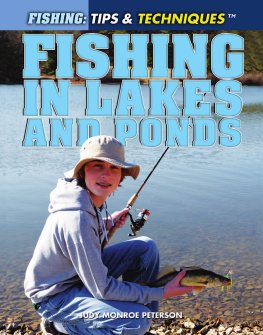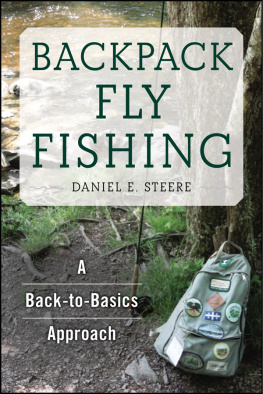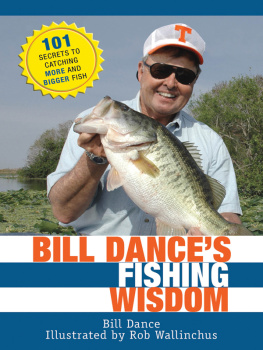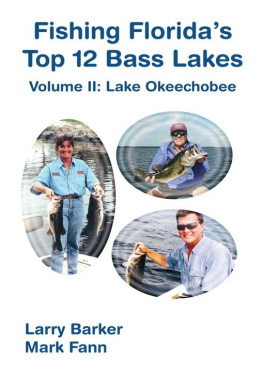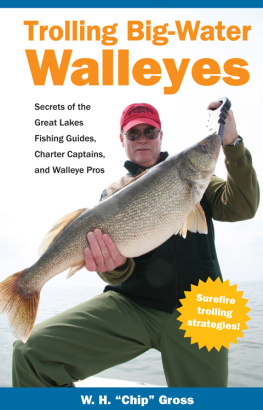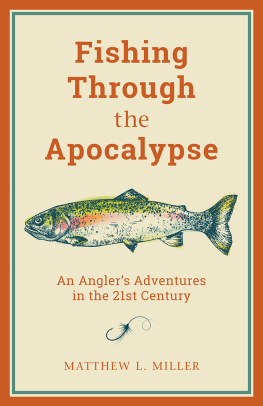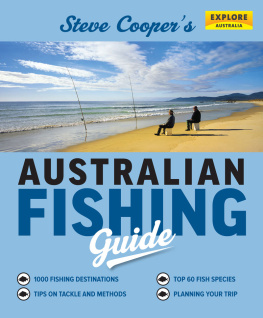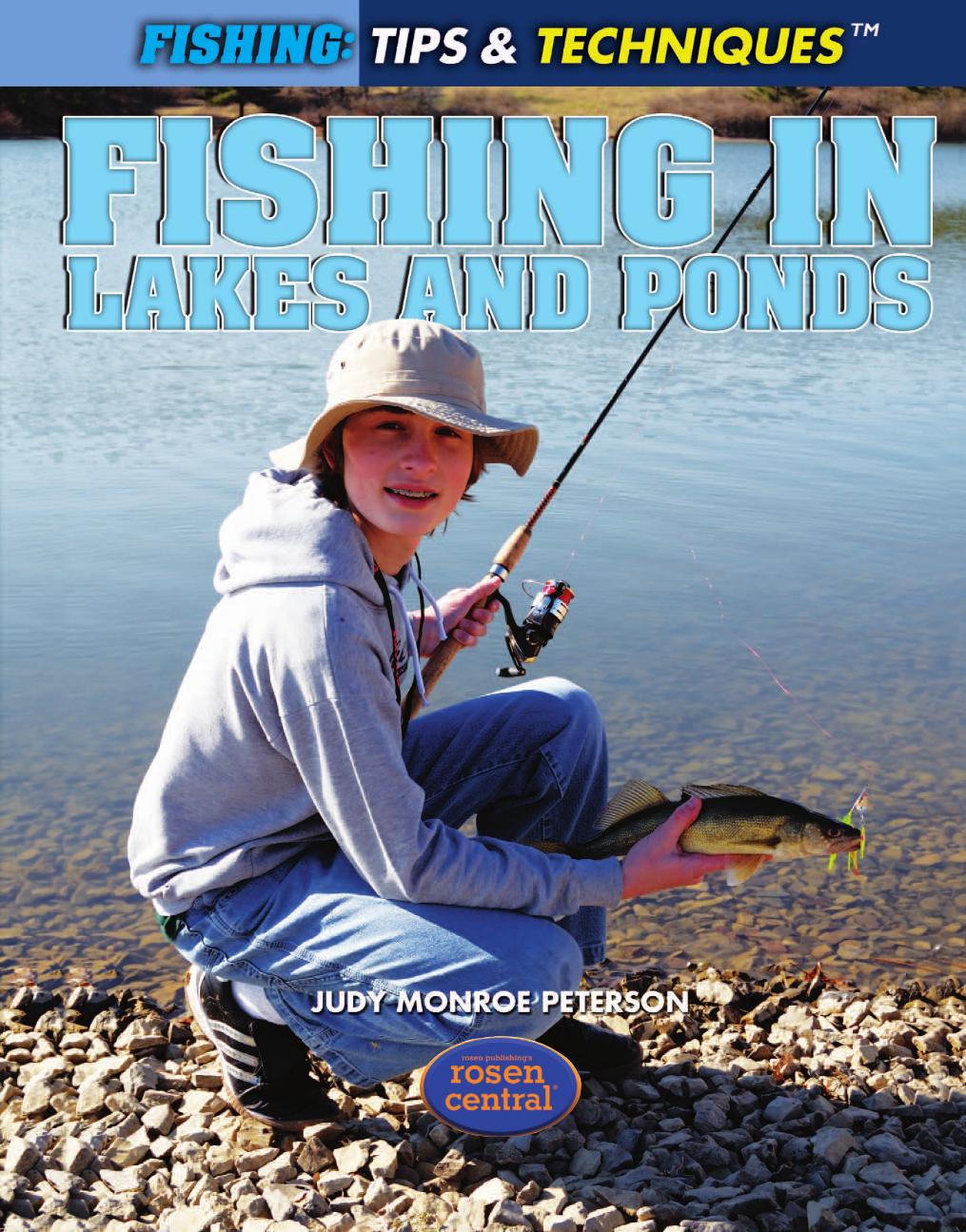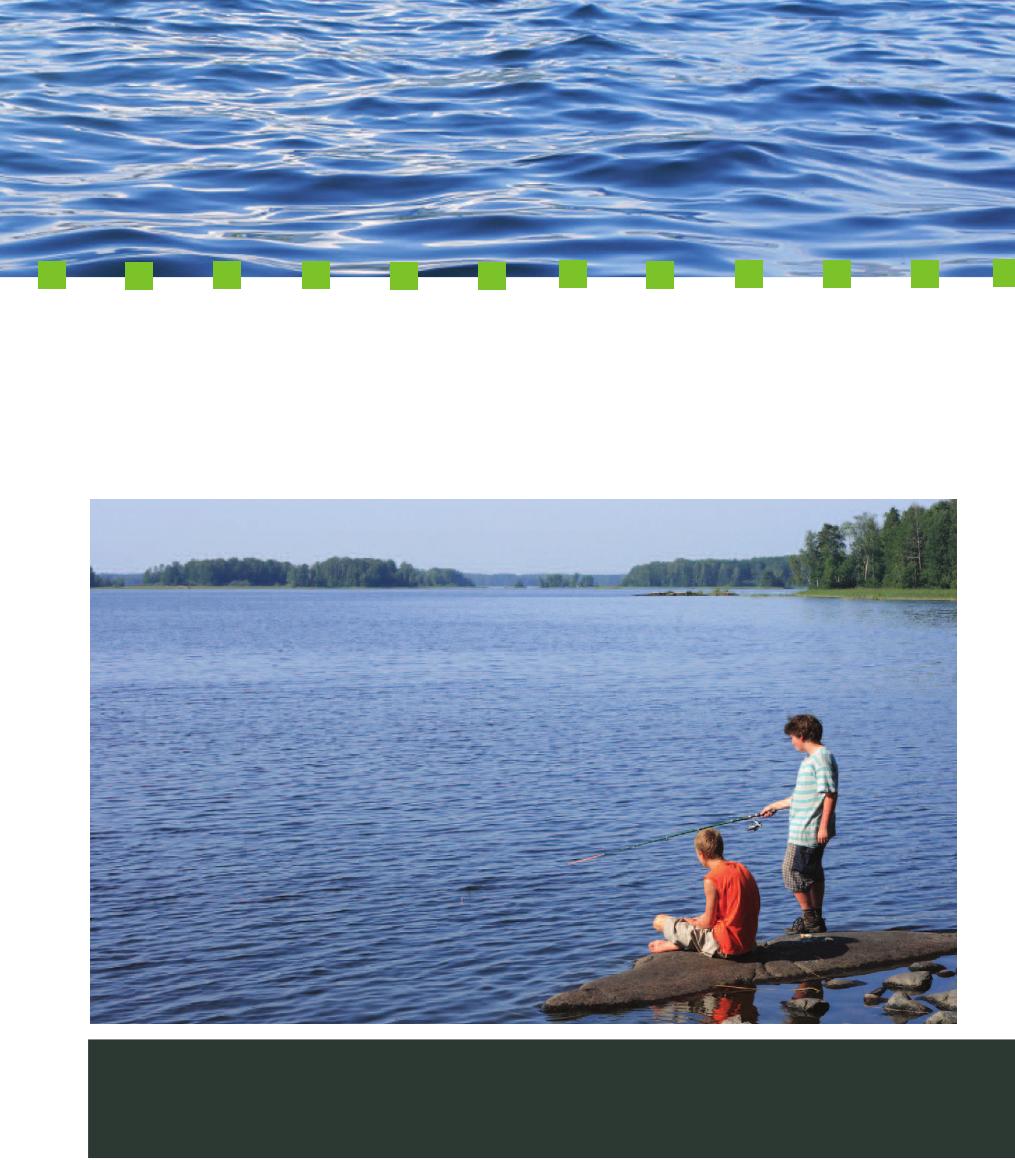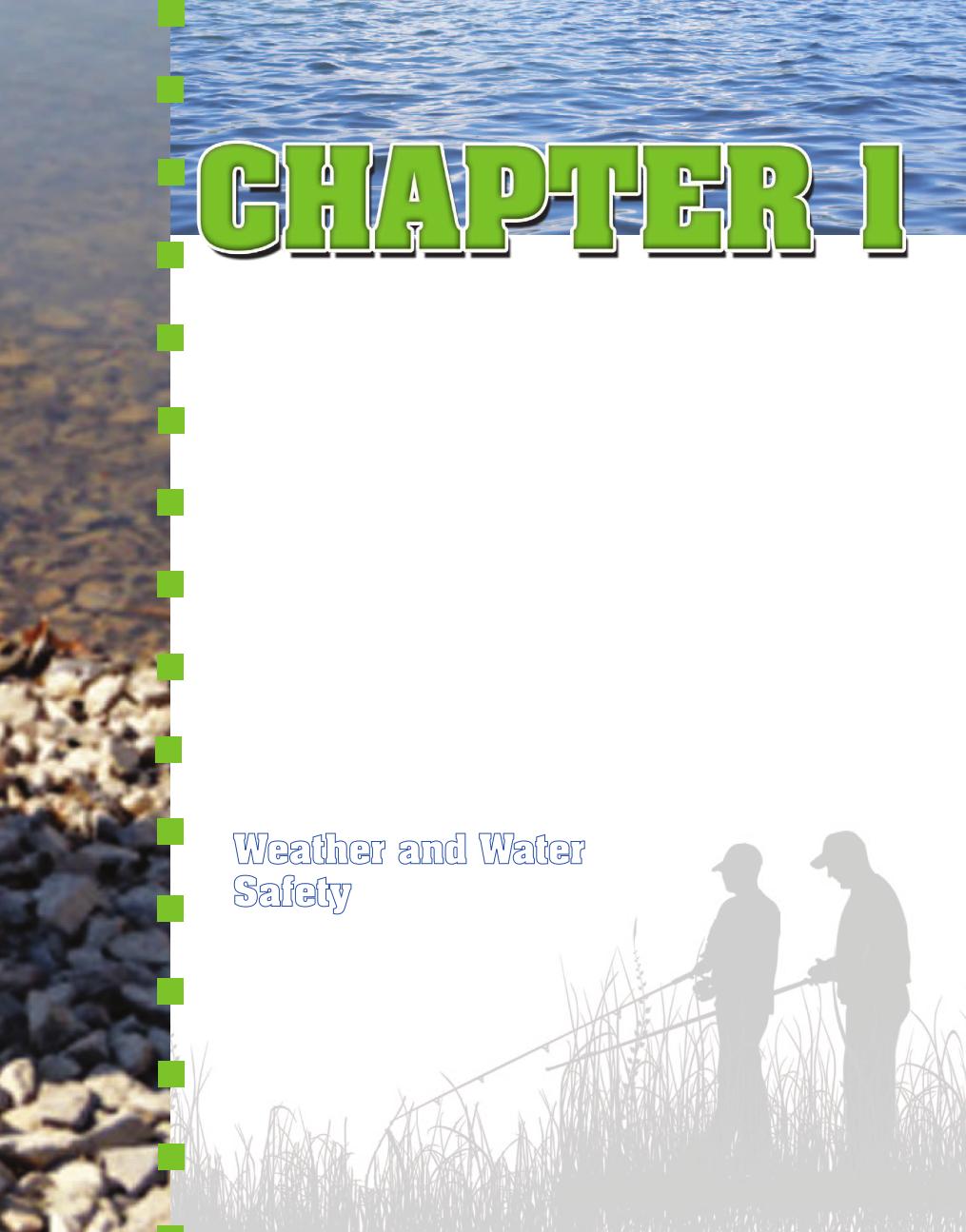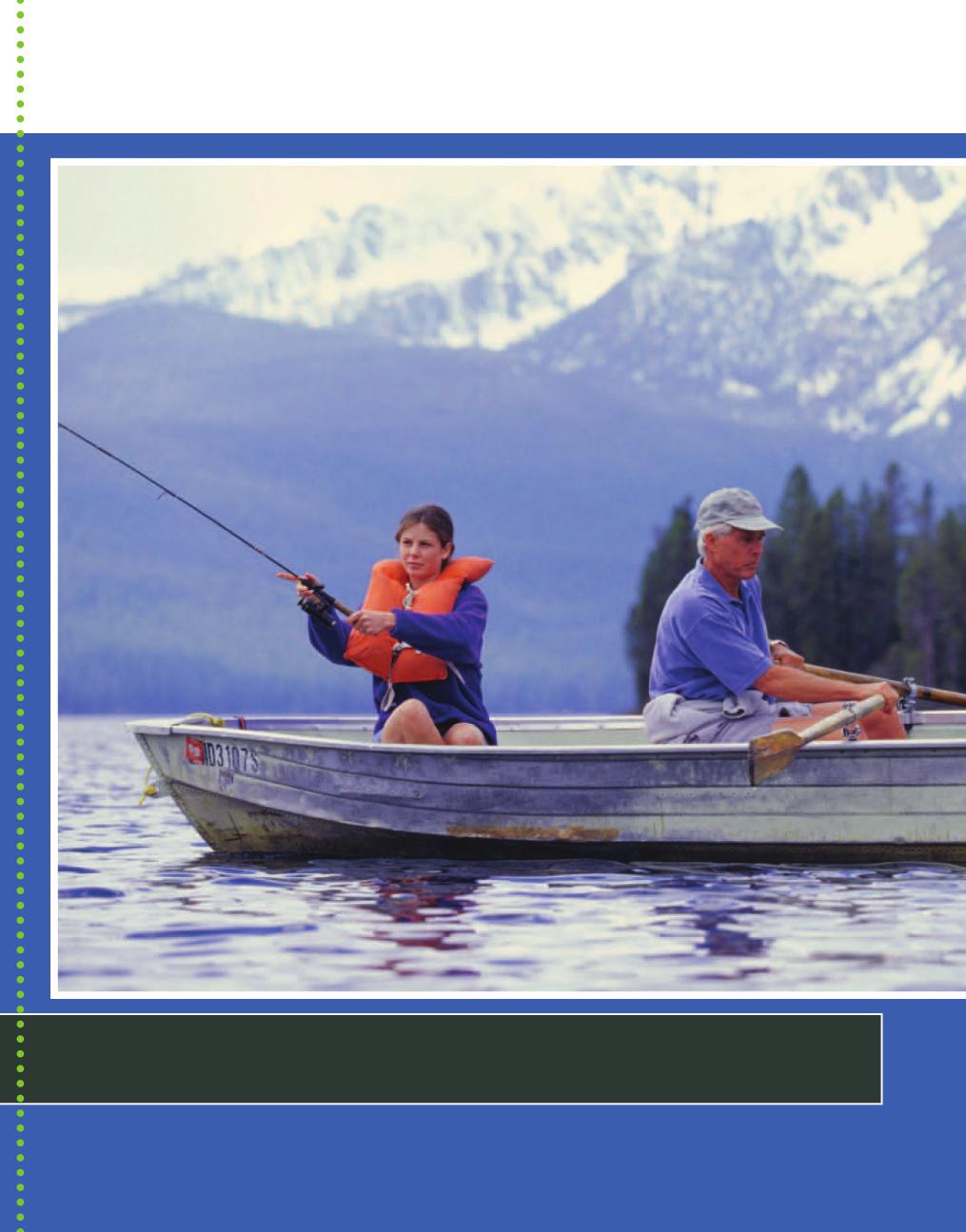T o Belle, Jasmine, and their dadall love to eat sh! Published in 2012 by The Rosen Publishing Gr oup, Inc. 29 East 21st Str eet, New Y ork, NY 10010 Copyright 2012 by The Rosen Publishing Gr oup, Inc. First Edition All rights r eserved. No part of this book may be r epr oduced in any form without permission in writing fr om the publisher , except by a r eviewer . Library of Congr ess Cataloging-in-Publication Data Peterson, Judy Monr oe. Fishing in lakes and ponds / Judy Monr oe Peterson.1st ed. p. cm.(Fishing: tips & techniques) Includes bibliographical r efer ences and index. ISBN 978-1-4488-4597-2 (library binding) ISBN 978-1-4488-4603-0 (pbk.) ISBN 978-1-4488-4734-1 (6-pack) 1. FishingJuvenile literatur e. I. T itle. SH445.P48 2012 799.1'1dc22 2010044137 Manufactured in the United States of America CPSIA Compliance Information: Batch #S11Y A: For further information, contact Rosen Publishing, New Y ork, New Y ork, at 1-800-237-9932.
I D C I C h a p t e r A L S A A D S P S I I L I I S C h a p t e r A C k L A D h q I P m C h a p t e r h w I S h C h a p t e r A P P A C h S I S h I A D P P A I h C A C h C h a p t e r I S h I S C S h A I A S L S S A m I m A I h A D I I L I A P h I D x

F
ishing is a popular and relaxing outdoor sport in North America and around the world. Millions of people enjoy shing in a wide variety of lakes and ponds. A lake is a body of water entirely surrounded by land. Many natural lakes are expanded sections of rivers or creeks. Some river curves become sepa - rated and are called oxbow lakes. Some are made from water in the form of melting snow or rain that runs of f from the surrounding area. A pond is a body of still freshwater and is smaller than a lake. Natural underwater springs create many ponds, and sometimes people construct others. A n g l e r s c a t c h f r e s h w a t e r s h i n l a k e s a n d p o n d s . Unlike the salty oceans and seas, inland lakes and ponds contain little or no salt. Many people like s m a l l s h c a l l e d p a n s h , w h i c h a r e s u n s h ( s u n n i e s ) , c r a p p i e s , b l u e g i l l s , a n d p e r c h . F a v o r i t e l a r g e r s h a r e walleye, northern pike, and muskellunge (muskies). Freshwater sh are readily accessible to people of all ages across North America. Some anglers make frequent, short trips to nearby lakes and ponds, or they might take longer trips to large lakes for catch - ing a particular sh. People can angle in lakes and
ponds using simple equipment such as a cane pole. Many people use rods, reels, and other equipment, which allow for a variety of angling methods. The method of shing determines the type of equipment used to catch sh. C a s t i n g b a i t e d h o o k s f ro m s h o re o n l a ke s a n d p o n d s i s a n i n e x p e n s i v e w a y t o c a t c h f re s h s h . F i s h i n g l a ke s e x i s t i n m a n y c i t i e s o r w i t h i n s h o r t d i s t a n c e s a c ro s s N o r t h A m e r i c a .
F I S H I N G I N L A K E S A N D P O N D S Fishing takes patience, knowledge, and skill. Anglers need dif fer - ent strategies and bait to outwit freshwater sh. They use baits based on the habits of a particular type of sh. Zones are layers of dif fer - ent temperatures of water in a lake or pond that separate dif ferent sh habitats. Small sh are usually found in the shallow , warmer water zone, while larger sh inhabit the open water zone. Some sh live only in the deeper , colder water zone. State and provincial shing laws regulate the seasons of the year for shing. The laws vary from state to state. Sometimes states set aside lakes only for releasing caught sh. All anglers need to know and follow regulations. Most states and provinces require anglers to buy a shing license. State and federal laws control shing to avoid overharvesting and extinction of freshwater sh. T o manage their sh populations, states have seasons for each type of sh. People can legally keep a par - ticular sh during its season. By buying licenses and paying taxes on shing equipment, anglers provide money to the states to enforce shing laws, manage shing and boating access of lakes and ponds, and improve the habitat of sh. State agencies also work to destroy invasive sh. The federal govern - ment of fers many freshwater shing opportunities through its National Wildlife Refuge shing programs. The National Fish Hatchery System allows shing at or near many hatcheries. F i s h i n g c a n b e e n j o y e d a l o n e o r s h a r e d w i t h f a m i l y a n d f r i e n d s . P e o p l e might combine shing with boating, camping, picnicking, hiking, or v i e w i n g w i l d l i f e . S o m e a n g l e r s l i k e t h e c h a l l e n g e o f n d i n g a n d l a n d i n g b i g s h a n d t h e n r e l e a s i n g t h e m b a c k i n t o t h e l a k e o r p o n d a f t e r t a k i n g a p h o t o g r a p h . O t h e r p e o p l e c a t c h s h t o p r e s e r v e a n d s a v e a s t r o p h i e s . People enjoy eating sh because the meat is tasty and nutritious.
A
n g l e r
S
A f e t y A n d
r
e S p o n S i b i l i t i e S
A
nglers should prepare to be safe and comfortable in the outdoors and near and on water . Bad weather can suddenly develop without warning. People can get painful sunburns or get caught on a shhook. Safe anglers help prevent acci - dents. An important step to take before shing is for anglers to let someone know where they will be shing and when they will return. In addition, they should keep a telephone number handy for the resource management in the area so that if an accident happens, they can get help. W nd W Sfy Anglers need to stay informed about the weather forecast and be pre - pared for severe weather . They should also pay attention to any unexpected wind,
T h e s e y o u n g a n g l e rs a re w e a r i n g o t a t i o n l i f e v e s t s . I f t h e y s h o u l d f a l l i n t o t h e water , t h e s e v e s t s w i l l k e e p t h e m a o a t , w i t h t h e i r m o u t h a n d n o s e a b o v e t h e s u r f a c e . F I S H I N G I N L A K E S A N D P O N D S
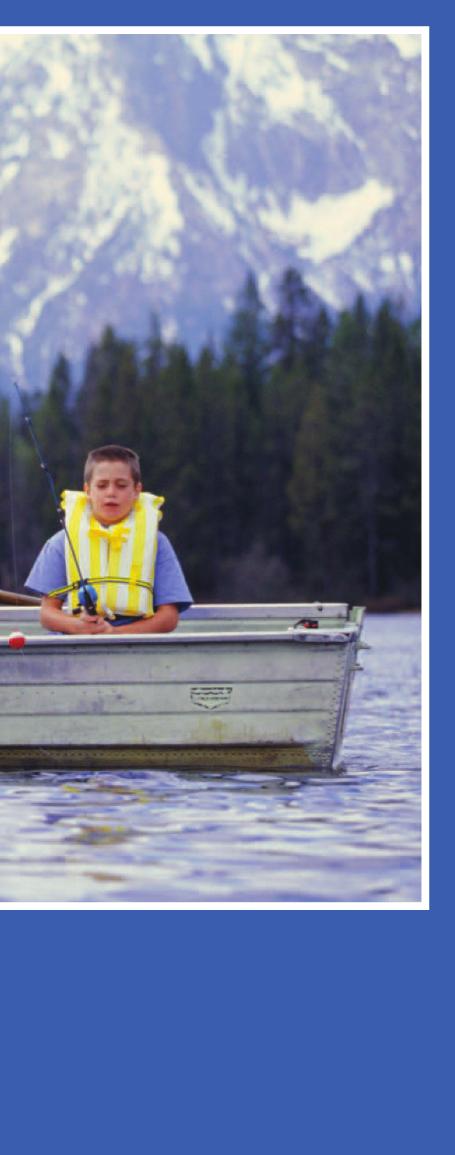
rain, and lightning. It is a good idea for them to take a waterproof radio to listen to weather forecasts when they are on long trips. Thick, gray clouds rolling in or sudden gusts of cold air signal an approaching storm. If a storm approaches, people in boats should head for shore. They need to put their rod down, get out of the water , and take cover . They should stay away from tall trees and move to low ground in case there are nearby lightning strikes. W earing rainwear a n d o t h e r g e a r c a n h e l p k e e p p e o ple from getting wet and chilled. When they are on boats, anglers need to keep a safe speed and watch wave conditions. They need to look out for sandbars, rocks, and submerged trees that could snag their boats. It is important for shers to stay away from litter that could cut or entangle their shing equipment or the boat motor . Most states require that all anglers wear otation gear while on the water . These life vests are lightweight and do not restrict people s movements. Flotation devices should be worn at all times, whether anglers are on a boat or a dock. a g l e r S a e t a r e S p o S i b i l i t i e S

